
Instant Gratification:
Momma, Don't Take My Polaroid Away
The Noise- July 2010
The Outs
by Ellen Jo Roberts
“Don’t undertake a project unless it is manifestly important and nearly impossible.”
Momma, Don't Take My Polaroid Away
The Noise- July 2010
The Outs
by Ellen Jo Roberts
“Don’t undertake a project unless it is manifestly important and nearly impossible.”
- Edwin Land
"The world is a terrible place without Polaroid."- John Waters
It seems incredibly unlikely. In fact, it seems darn near impossible!
How is it in the year 2010, the second decade into our 21st century digital age of instant communication, smart phones, status updates, tweets, and viral videos, that any attention would be paid to something so distinctly 20th century as instant film? Instant film is like TV dinners, or remote control: harkening back to our earliest notions of a speedier future world, in a quaint 1950s sorta’ way, like the Jetsons. Polaroid was imploding, hemorrhaging 25% a year in profits, when it slowly ceased production of all varieties of instant film in the 2000s.
How has it suddenly become the fresh hot new image-maker? Ironically, it’s due to an internet community of artists, hipsters and analog buffs that instant film is being resuscitated from near death.
Edwin Land was an American inventor born under the sign of Taurus in 1909. He first gained success and created the Polaroid brand by inventing polarizing filters for sunglasses and camera lens. He developed his eponymous Land Camera in 1947. Polaroid initially underestimated how popular the camera would be. When first offered at a Boston department store during the 1948 Christmas shopping season, all 57 Land Cameras in stock sold out in one day. Though Edwin Land, a complicated and stubborn genius, invented all sorts of amazing optical gear for the government, he considered the development of SX-70 film and camera to be his crowning achievement.
"The world is a terrible place without Polaroid."- John Waters
It seems incredibly unlikely. In fact, it seems darn near impossible!
How is it in the year 2010, the second decade into our 21st century digital age of instant communication, smart phones, status updates, tweets, and viral videos, that any attention would be paid to something so distinctly 20th century as instant film? Instant film is like TV dinners, or remote control: harkening back to our earliest notions of a speedier future world, in a quaint 1950s sorta’ way, like the Jetsons. Polaroid was imploding, hemorrhaging 25% a year in profits, when it slowly ceased production of all varieties of instant film in the 2000s.
How has it suddenly become the fresh hot new image-maker? Ironically, it’s due to an internet community of artists, hipsters and analog buffs that instant film is being resuscitated from near death.
Edwin Land was an American inventor born under the sign of Taurus in 1909. He first gained success and created the Polaroid brand by inventing polarizing filters for sunglasses and camera lens. He developed his eponymous Land Camera in 1947. Polaroid initially underestimated how popular the camera would be. When first offered at a Boston department store during the 1948 Christmas shopping season, all 57 Land Cameras in stock sold out in one day. Though Edwin Land, a complicated and stubborn genius, invented all sorts of amazing optical gear for the government, he considered the development of SX-70 film and camera to be his crowning achievement.
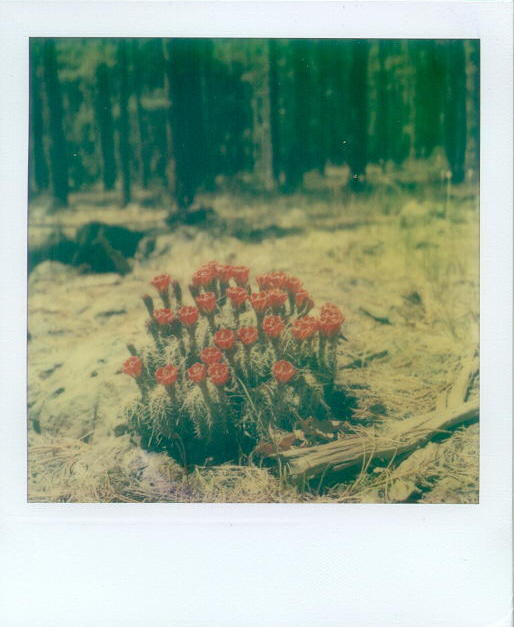
An explanation of “instant film”: It contains all of the chemicals and components needed to develop, fix, and print an image. Unlike standard 35mm film, which requires a complex series of external procedures to create an image negative and print, the instant photo developed itself, without use of a dark room, enlarger or vats of chemicals. Nowadays when every camera and every cell phone shows you your image instantly, it may be hard to imagine what’s the big deal.
In 1948 this was huge, and it remained a great novelty for about 50 years.
Generally speaking, the image quality of instant film is not as richly detailed as a 35mm image, or that of the much larger medium format negative. Rather than crisp detail it casts glowy nuances. The instantaneous of the print proved to be helpful in various applications. Police found it useful in documenting investigations and making mugshots. Similarly, instant photos were ideal for passports, drivers licenses, and identification. Hollywood utilized Polaroid for checking lighting, and continuity of costume. Artists took hold of the medium. Andy Warhol was perhaps one of Polaroid’s biggest fans, using their “Big Shot” portrait camera to capture images he would later turn into silkscreen portraiture of New York night life.
The number one factor in Polaroid’s success? It was just plain fun, to have that photo develop in your hand at the party. Your iPhone might show you your photos as you take them-- but are they something real in your hand, or simply an electronic stew of code in a format that will also one day no longer exist?

Fred Slavitter is a friendly retired fellow from Needham, Massachusetts. A graduate of Rensselaer Polytechnic Institute, he worked for Polaroid from 1969 until 1995 as New Products Development Engineering Manager, supervising development engineers and creating new photographic devices. Mr. Slavitter holds 10 patents on various items of photographic equipment, including an SX-70 lens. He drove his family bananas always testing new camera products on them. “Instant cameras provided instant photographic gratification. They provided instant enjoyment at special events, parties, picnics, etc., and gave assurance that you got the picture you wanted or gave you the opportunity to take a second picture.” Mr. Slavitter feels Polaroid’s heyday took place from the mid-1960s through the mid-1970s, faltering by the 1980s.“This was due to Polaroid not investing enough in improving their instant film. Fuji came out with a better film.”
There are two basic varieties of instant film —the peel apart type, and the integral type. Peel apart came first, but integral film may be the kind most are familiar with, “shaking it like a Polaroid picture”. Integral film spits out of the camera with a click and a whirr, no muss no fuss, fully sealed, and just a moment or two for the image to take shape. First developed for the SX-70 Land Camera in 1972, integral film was produced by Polaroid up until 2006. Since 2006 there has been no alternative available, and SX-70s around the globe sat dormant, discarded, abandoned…until now. Film is available again via “The Impossible Project”, a New York City company that is slowly reviving assorted instant film products. In March of 2010, The Impossible Project, founded by Florian Kaps, began selling brand new experimental instant film, after purchasing an old Polaroid factory in the Netherlands.
Their first test batch of “PX 100”, while dreamy and strange, suffered from various problems: leaky emulsion, unfolding edges. These issues have since been corrected, and the company strives to create a whole new generation of unpredictably spirited instant film. It was quite something to unfold my dusty 1970s SX-70 and hear it whirr back to life when I put the first pack of Impossible Project film into it. This new generation of instant integral film ain’t cheap, running $3-4 per shot. Makes you really contemplate what you are photographing.

David Bias, the Vice President of The Impossible America Corporation, explains the inspiration behind their venture, “We all know that when the mainstream goes one direction, there are always those who search for other things. A growing portion of these ‘others’ have a healthy respect for physical things - things made out of artistic ambition or simple handcrafted love. The inspiration for The Impossible Project is Edwin Land, plain and simple. Instant film photography is the best of both worlds - the immediacy we love about digital, along with the organic warmth of film.”
I’m a fan of Polaroid type 100 cameras, the kind that use peel-apart or “pack” film.
The peel-apart variety dates back to 1963, supplanting the first generation of roll film, which was far more complicated and fussy. I have a big beautiful roll-film camera dating from the 1950s. It’s huge like a piece of furniture, or a Buick, and it pops open like a parade float. Polaroid buffs have converted these old roll film cameras to pack film, but I’m a poor engineer and prefer my cameras ready-made.
My favorites are from the clunky-looking “Colorpack” series (c.late ‘60s-early ‘70s).
Pack film requires a short series of procedures to get your photo. Unlike integral film, which spits self-propelled out of the camera, pack film needs to be pulled out from the camera, via paper tabs. Rollers crush the chemicals in between a negative and photo paper. After about 90 exciting seconds, the negative is peeled back, revealing the finished print. The negative is then discarded-- though many artists prefer to scan and manipulate the negative rather than the paper print. It is the peel-apart variety that artists use for Polaroid transfers, and emulsion lifts. Roll film operated on the same principal, but utilized 2 separate rolls that met in the middle- one photographic paper, and one with negative and processing chemicals. It was discontinued in 1992.
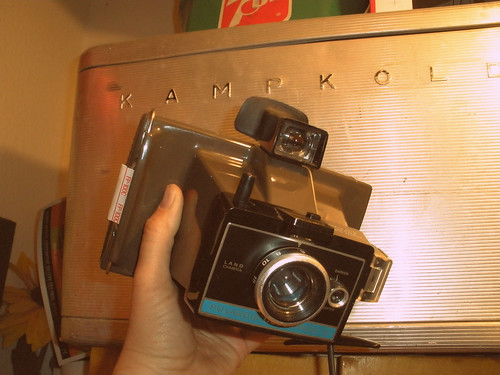

Polaroid’s pack film production ceased in 2008, but Fuji-Film of Japan has continuously produced peel-apart film since 1981, thus keeping Type 100 Polaroid cameras active. I avidly consume Fuji’s FP100C (color) and FP100B (black and white) films. I devour them like candy. It cannot be found at the grocery store, but can be ordered online with ease, from Freestyle in L.A., or B & H in New York City.
Fuji instant film averages about $11.00-$12.00 for a film pack of 10 images, so at over a dollar a shot they’re not completely beyond budget, but they do exceed the 30 cent per photo processing for 35mm shots. And it’s all far more costly than digital. Digital photography is essentially free once you’ve purchased the equipment and the software, hence its stronghold and vast popularity.
Everyone knows I am a hardcore analog snob. The reason I shoot film nearly exclusively (besides the staunch belief the quality is better and the results more interesting), is that the costliness makes it something precious, and therefore encourages better photography. Unlike digital images, in which one prize-winner can be culled from a hundred similar variations, analog photography requires more thought prior to the shot, rather than excessive editing, deleting, and post-production afterwards. Shooting on film also allows for a bit of happy accident magic that digital does not. There’s a level of unpredictability and magic. Double exposures, accidentally or on purpose. Strange lights and colors you don’t see ‘til long after. Digital encourages fidgeting with the gadgetry. With film you just have to wait and see.
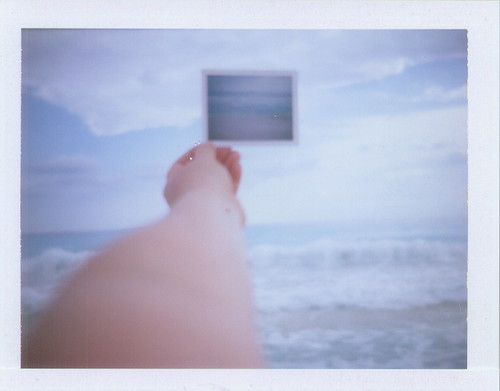
Michael Raso is a photographer, and the owner of New Jersey’s Pop Cinema Studios. He’s also the producer of the “Film Photography Podcast”. Mr. Raso is always generous with his enthusiasm and knowledge of analog photography, “Digital photography is a great advance in technology but not an alternative for the chemical process of photography. It’s all personal choice and I choose film as my medium. Chemical manipulation, image transfers and emulsion lifts give me so many opportunities to make each image its own work of art. I love it. Polaroid instant film has a quality and esthetic like no other. A Polaroid image has a color palette as unique as, let’s say, a Kodachrome slide. Simply original. Whether the integral SX-70 type or the amazing --as I call it-- ‘crack and peel’ 100 type film – the retirement of Polaroid films created a huge outcry from artists around the world. Photographers want the film.”

Justin Craigen is a UK born graphic designer working in Ames, Iowa.
“I love instant film because it allows for a wonderful break from digital photography, which is part of my work as a designer. It's nice to have a unique physical object to handle rather than a bunch of 1s and 0s on a screen that's not good for viewers' eyes…There are also the qualities of color, and sharpness that are unique to the films. People go to some lengths to fake those qualities digitally, but as of yet I haven't seen a single effort that actually does it even half-arsed well.”
Sean Rohde is a Phoenix-based Polaroid whiz, working desert-baked magic on expired films. He writes all about his extensive efforts and instant film adventures on a fascinating blog called Moominsean. “Digital cannot match the qualities of instant film. You may be able to make an effort to replicate instant film on a computer, but there is something special about a product that does these things on it's own without digital trickery,” Mr. Rohde says. “The Impossible Project? I think it's great that there is enough interest to support such a venture, and there are people willing to go the extra mile to make it happen!”
“Why do people seek out instant film is this digital age we live in?” I asked my panel of experts and instant film enthusiasts.
“The same reason people seek out things that are difficult, rare or temporary, because it’s worth it. The same way we love and celebrate the brief blooms of the cherry tree, or stare with breathless joy at the view from the mountain we climbed, so it is with Polaroid. It’s special because it’s not everywhere. Digital is all around us and we are a bit desensitized to it,” says Ashley Russell, a media artist from Vancouver, British Columbia, “Polaroid is like a magic lens that reveals the beauty in everything. Looking at the world through Polaroids makes one realize how much beauty this world holds.”
I am rich in Polaroid cameras. People give them to me all the time. The digital age has benefited me big, with folks passing me off all of their old analog gear, including a complete darkroom set up. You probably think owning a Polaroid camera is like owning a VCR or a pet dodo bird. It’s something extinct, displaced by more modern creatures. But I see the film culture as something akin to the survival of albums on vinyl, kept alive by a select group of aficionados. I see the Polaroid as some type of fantastic time machine, translating this sharp-edged modern world into something of a softer vintage. Perhaps now too you’ll see the value, and walk a bit slower through the gadget aisle at your local thrift shop.
For more information:
http://www.blogger.com/www.theimpossibleproject.com
http://www.filmphotographypodcast.com/
Ellen Jo Roberts will probably take your picture, if she hasn’t already.
She lived in a vintage bungalow in Clarkdale Arizona with her oft-photographed spouse, pets, and Volkswagens. Read all about it at http://www.ellenjo.com/
She lived in a vintage bungalow in Clarkdale Arizona with her oft-photographed spouse, pets, and Volkswagens. Read all about it at http://www.ellenjo.com/

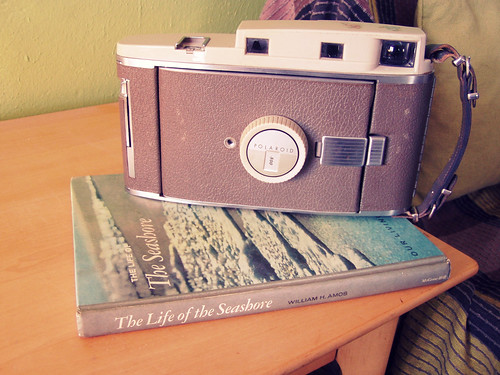
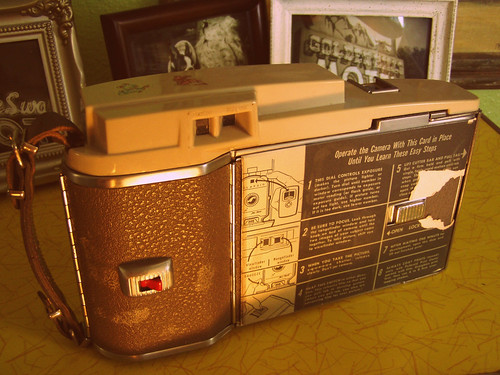

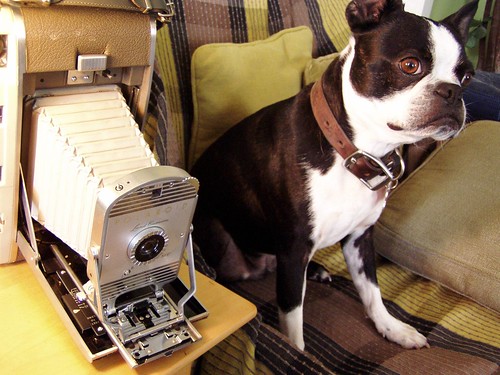
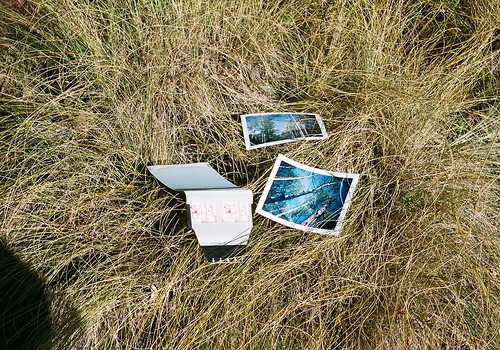

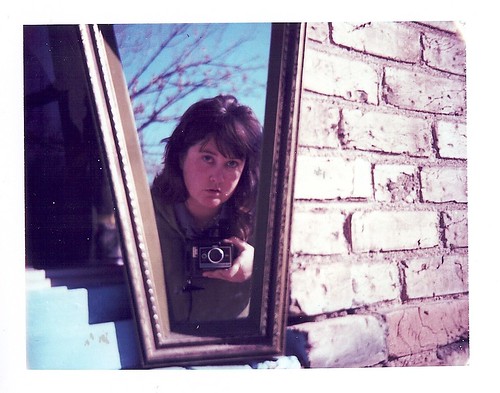
Digital, while great for the masses leaves something to be desired. Because it is what it is it does, in my opinion, tend to make bad photographers while Polaroid forces the photographer to take time to think about each and every photograph.
ReplyDeleteI think Edwin Land must be turning over in his grave seeing what Polaroid has become. Thank goodness for the Impossible Project.
Vi Jones
This is a fantastic blog. Please visit my new blog, covering all things Polaroid, at www.arthurpolaroid.wordpress.com
ReplyDeletePolaroid initially underestimated how popular the camera would be. ... ipolaroidkamera.blogspot.de
ReplyDelete